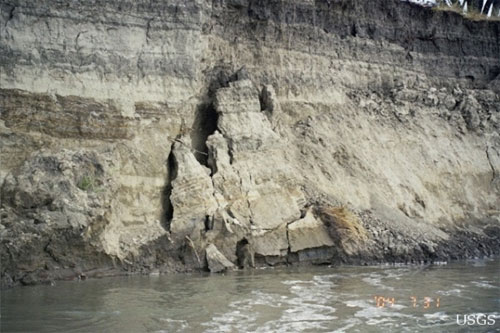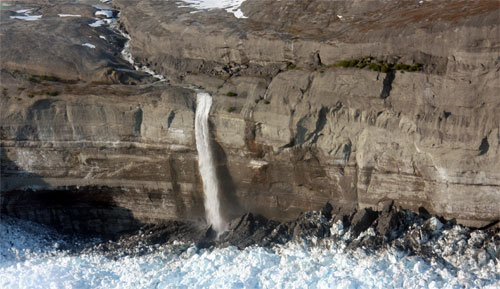Another physical process is called erosion. Erosion in all of its forms reshapes landforms and coastal regions, as well as riverbeds and riverbanks. Erosion occurs when weathered material is moved by the action of wind, water, ice, or even gravity. For erosion to take place, a transporting agent (such as water) must be present.
Erosion involves material moving from one location to another resulting in the lowering of some locations and increasing in elevation in others. For example, water might carry topsoil from a hill into a river and gradually cause the river to become narrower. Glaciers, waves, stream flow, or blowing winds cause erosion by grinding rock into smaller pieces.
Analyze the following examples of erosion and try to determine the causes of the each one:
![]() Watch the following video that shows coastal erosion in a 4-week time lapse at Drew Point, Alaska.
Watch the following video that shows coastal erosion in a 4-week time lapse at Drew Point, Alaska.
Source: Drew Point, Alaska Time-Lapse Photograph of Coastal Erosion, USGS, YouTube

Source: Bank Erosion, U.S. Geological Survey
This is a photo of an active bank erosion on the right bank of the Missouri River, located southwest of Brockton, Montana.

Source: Rapid Erosion, Shad O 'Neel, U.S. Geological Survey
This is a photo of the St. Elias Mountain Range in Icy Bay, Alaska. This area is known for having some of the fastest erosion rates on Earth.